The First Week of World War Two
| The first week of the second world war according to General GF Eliot in Life Magazine, on 18th September 1939 |
|
|
|
In order to understand this war at
all you must not think of troops in the hundreds of thousands or millions. You
must think of the numbers of available, organized equipped divisions, fighting
teams. In actual numbers a division consists of 12.000 to 18,000 men. Germany
began the war with slightly more than 100 divisions of all types available for
field service, plus about 20 Landwehr divisions specially trained to garrison the
fortifications in the West. Poland had 60 divisions, of which 30 were first line
and 30 reserve. 1) Converging attacks on
the Corridor, east from Pomerania toward Bromberg and southwest from
East Prussia toward Grudziadz. The idea was to meet near Chelmno. 3) A direct attack upon Warsaw from East Prussia via Mlawa. (Image below). The Polish plan of defense was to protect its salients by rear guards, destroy bridges and communications lines as its troops fell back; to keep concentrated forces available for counterattack; to defend Warsaw and the “Industrial Triangle” south of that city as long as possible; to keep open communications with Rumania and Lithuania; to delay the enemy as much as possible, playing above all to keep intact the main elements of the Army. |
 Mlawa |
|
After one week of war, how do plans check with
achievements? With due reservations for incomplete and conflicting
information, the situation as of Sept. 9 was as follows: The Germans had successfully completed phase No 1, having attained the line of the Vistula between Grudziadz and Bromberg and thus cut off the Corridor. They claim to have crossed the Vistula near Chelmno and to have taken 10,000 prisoners there. If the latter is all they can claim it may at once be said that the Poles on their part have successfully evacuated the Corridor without undue loss. Phase No. 2 has been also accomplished, the Germans using their air force to assist the break-through near Czestochowa. The Polish industrial region of Upper Silesia is now under German control, though one can imagine that isolated resistances continue. The advance on Cracow has pushed quickly forward, the Germans now occupying this important city. According to German reports the eastern column had reached Nowy Sacz and was pushing on into the Industrial Triangle. Phase N o. 3 has carried a German force forward to the general line Plonsk-Pultusk. At Pultusk the German left flank rests on the river Narew near Plonsk. The German right-flank elements are on the Wkra. The Germans appear to be pushing forward into the narrowing space between these rivers. In front of them is the formidable obstacle of the river Bug and its continuation, the Vistula. Mechanized elements of the German left are at Rozan on the Narew. This German force is now just north of Warsaw, but the Bug and the Vistula still intervene. Polish resistance is stiffening. As far as is known the Poles are still in possession of the crossing of the Narew at Ostroleka behind the German left. One might conjecture that they have assembled a counterattacking force in the triangle Ostroleka - Lomza -Ostrow which might seriously endanger the German left rear. In any event a serious battle, the first great engagement of the war, seems now to be developing along this front. The crossings at the junction of the Bug and Yistula rivers are heavily fortified. |
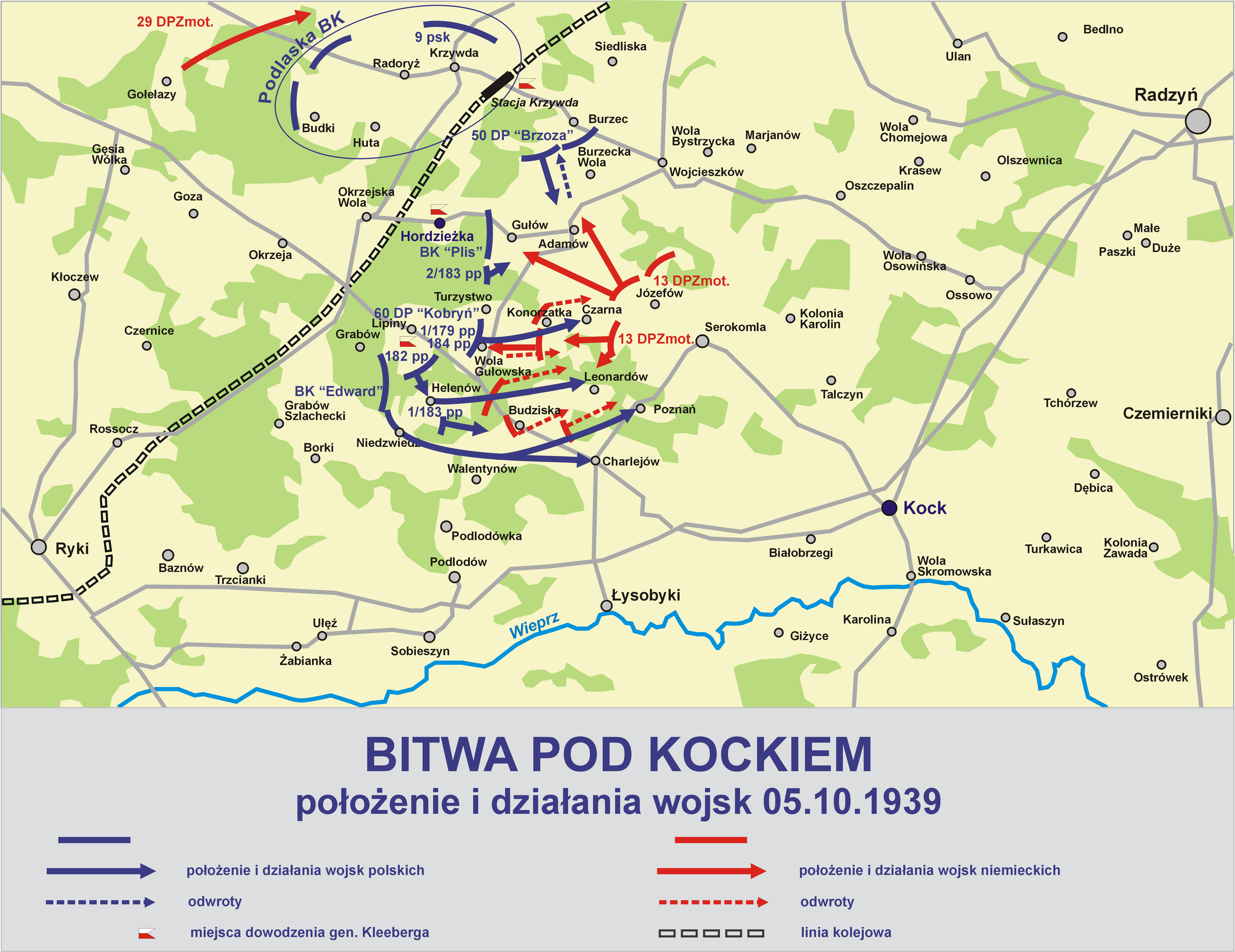 |
| A fourth phase of the German attack is seen in the rapid advance upon Lodz. German mechanized elements moving forward from Czestochowa followed the railroad northeast at high speed to Warsaw, forming a great pocket in west Poland. Meanwhile German sidethrusts were made eastward toward the Vistula. It is possible that the bulk of the Polish forces is now in the area around and south of Warsaw, occupying a central position, with radiating railways available insofar as these have not been damaged by air attack. Very much stiffer Polish resistance may now be anticipated, with counterattacks on the German forces which in some cases appear to have pushed on somewhat rashly. As the week ended, German troops were closing in on Warsaw from the north and the southwest. In the north the situation is still obscure. From the southwest the rapid German advance appears to have continued to the outskirts of Warsaw and there to have been checked. If, as claimed by the Germans, armored reconnaissance elements are scouting in Warsaw’s suburbs, they seem likely to be from this force rather than from the northern force beyond the Vistula. |
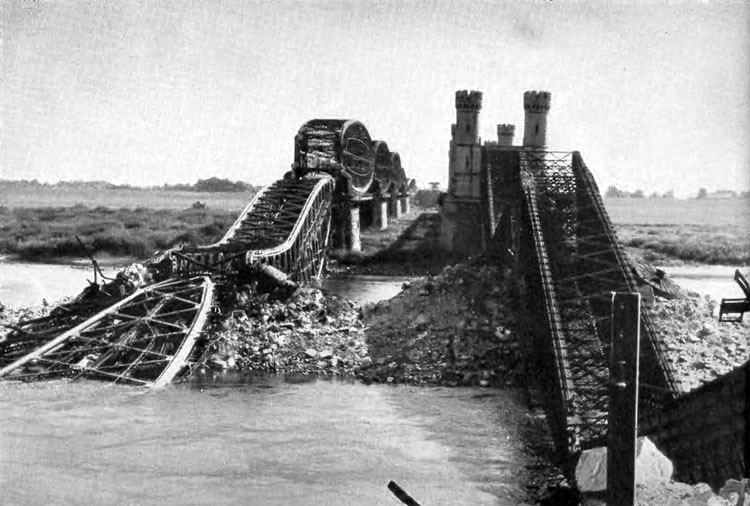 The Polish blew up the Vistula Bridges as they withdrew |
| The gravity of the threat to the Polish capital is not to be denied, nor the seriousness of its loss to Poland. But the Polish Army, and not the Polish capital, is the true German objective. All available information here indicates that the Polish Army is still intact and ready to act at the proper moment. Clearly the very rapid German advances on several fronts were not seriously opposed except in the southwest and there is no indication even from German claims that any great number of prisoners or war material were taken. Polish morale is still reported high and the retreat of the advanced elements was carried out in an orderly and careful manner. On the other hand much emphasis seems to be laid by Polish commentators on the situation in which the Germans will find themselves when the rains come down and the dry flat country over which they have swept forward so swiftly becomes a morass. This might indicate that the Poles are retiring behind the Vistula, clinging to their strategic triangle south of Warsaw, and that the counterstrokes may not yet be forthcoming. |
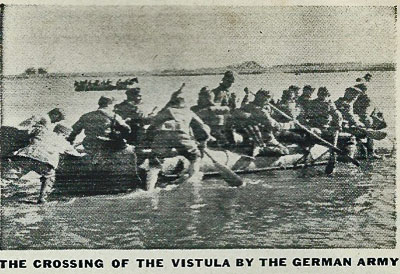 I am unsure of this, they look Polish? |
|
This has so far been entirely a war of
maneuver, with forces moving freely and without any trench fighting. As
with the defense of Madrid, the war may be about to enter on another
phase in which the fighting will be much more severe and less mobile. So
much for the war in the East. Remember that Germany’s idea is to put the
Poles out of the war quickly and that the Poles are trying to keep their
Army a going concern as long as possible. The decisive time factor is
directly related to what happens in the West, where Poland’s Allies,
Britain and France, appear to be mounting an attack against the German
western border. The original German plan called for the use of 80 to 85
divisions of all types against Poland, leaving a mobile force of 15 to
20 divisions available in the West. No one expected this to be able to hold up indefinitely the powerful thrust of the magnificent French Army of '70-odd divisions (rising in the first two weeks of full mobilization to almost 100) plus anywhere from a dozen to a score of British divisions. But there are in addition the fortress troops of the Landwehr and the fortifications of the Westwall which they man. These Landwehr units are composed of men 35 to 45 years old. Many of the soldiers and almost all of the noncommissioned officers fought in the World War and have had experience in holding fortified positions. They could not make long marches with full equipment but they can sit in a casemate and manipulate a machine gun. The German hope is to hold on this front until the Poles are finished. Indeed, they undoubtedly hope to finish the Poles before the French and British really attack in deadly earnest, and then to make peace on the basis of “let’s face the facts.” It takes time to concentrate for an attack, prepare the way for artillery fire and drive forward the very large forces needed to break a modern fortified line. The handful of mobile German divisions are intended to deal with any possible break-through. In 1914 the Germans planned to attack the French in overwhelming force, finish them off and then turn on the slower moving Russians. |
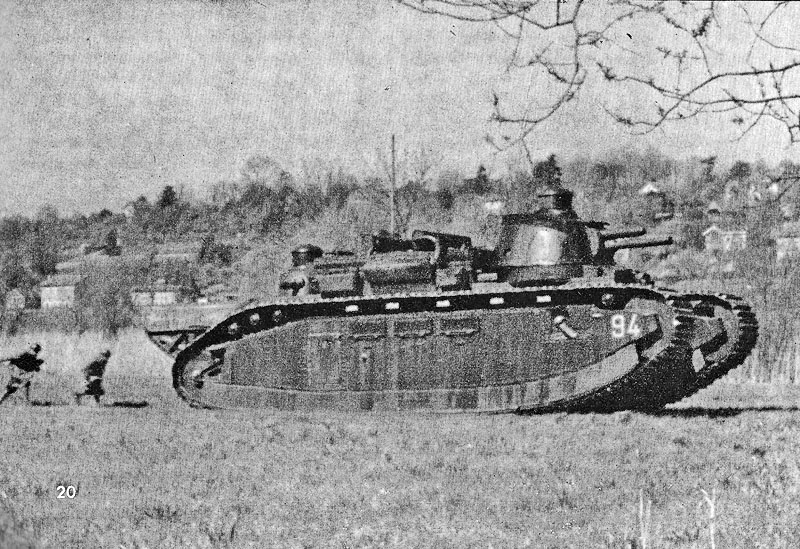 French 15 man Breakthrough Tank - M70 |
|
The plan failed largely because, at, the critical moment, with the Russians in East Prussia, the younger Moltke, then chief of the great Federal Staff, lost his nerve and began shifting troops from west to east. The result was that two army corps and a cavalry division were in transit at a time when the Russians were already beaten at Tannenberg and Germany was losing the decisive battle of the Marne. Two army corps might well have swung the victory the other way. Reports of the French
attack on Saarbrucken indicate that a similar situation is developing.
Will the Germans stick to the Poles despite the French threat? If they
do, Will the French be able to carry their offensive far enough so that
the Germans will have lost the war by waiting too long, no matter What
happens in Poland? Will the Germans, on the other hand, start shifting
troops from east to west to meet the French, and if so will the Poles
then stage a comeback against the Germans in the east? |
|
The sensation of the war on
the Polish front was last week’s seven-day drive by a mechanized German
army 200 miles northeast to Wlarsaw. This amazing feat of continuous
striking power was principally achieved by use of the tank. On this page
is the German idea of how the tank should be used. German formula is to
use lots of them and to launch them in waves, each one feeling out the
resistance and overcoming it to clear the way for the following wave.
Here too planes, as well as artillery fire, first try to take out the
defending artillery. These gunners can hear the indescribable
pandemonium that a mass of tanks produces, a splitting, clanking,
roaring bedlam. The tanks having finished their assignment, tractor trucks bring up the infantry. Anti-tank guns and motorized artillery coming with them will be able to repel a possible counter-attack. The defense put up by the Poles by no means gave the tank attack a first-class test. Lacking were tank traps, land mines, masses of anti-tank guns and counter-attacking tanks. Sometimes the Poles threw horse cavalry against tanks. The Germans used waves of 120, 240 and even 450 tanks, supported by infantry. But the German mechanized drive did show that, once a “break-through” is made and the enemy’s resistance is disordered, an efficiently organized tank attack can keep on driving him over the horizon. This is a potent precedent for the western front. |
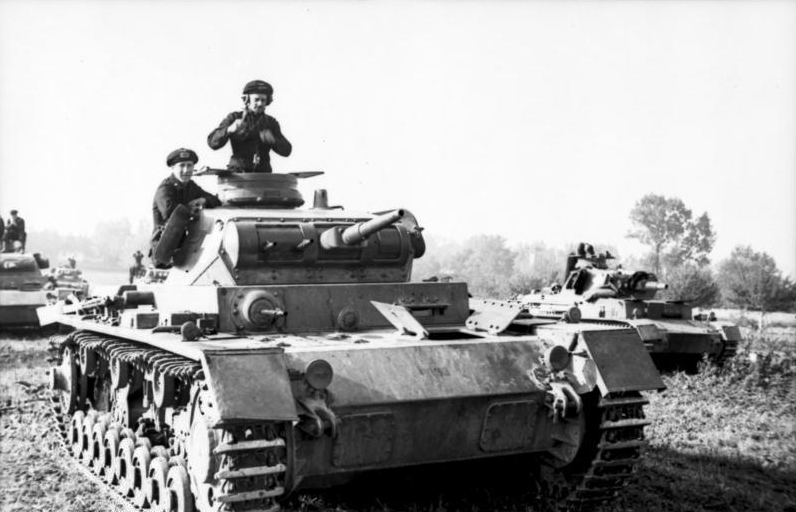 Poland 1939 |
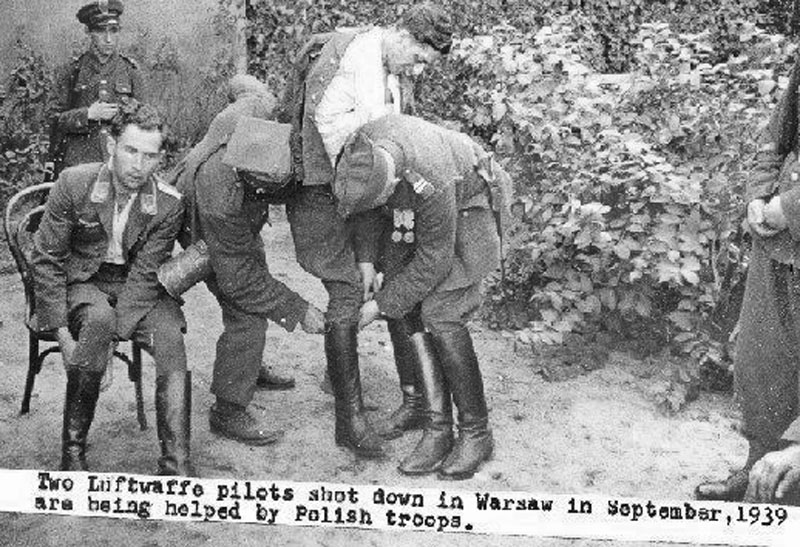 |
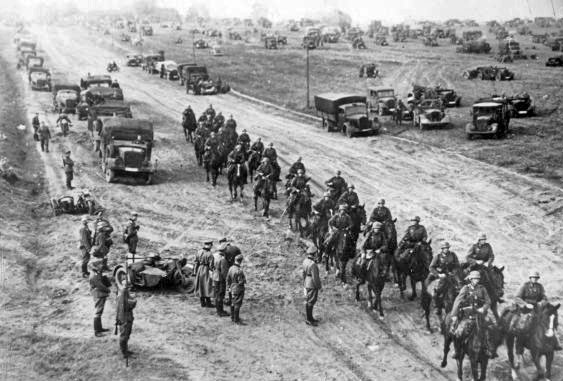 Germans entering Poland from East Prussia 1939 |
| Western Front |
|
In the first Week of the war the French pushed across the German border.
Advancing from their own border down into the Saar Valley, which lies in
the 25 mile wide strip between the Maginot and Siegfried Lines, they
encountered little resistance until they reached the Saar River. To the
southeast, beyond the intervening rough country, they pushed cautiously
out into the wooded. Rhine plain. These advances led toward one of
Germany's valuable industrial regions, including the coal and iron-rich
Saar district itself, which belonged to Germany before the last war and
was gained afterward by the French and returned to Germany by plebiscite
in 1935. It was unlikely that the French would attempt a quick break
through the Siegfried Line. Instead, they appeared to be getting into
position for a long siege, an artillery-hammering war of attrition in
which Allied superior material resources would eventually wear down the
Germans’ resistance. (really?!). The French had to retrieve tons of supplies from storage before they were even ready to advance. Unfortunately I feel that the British & French Generals, being of the old, OLD, school, were unprepared tactically for taking on Germany and the entire assualt on the Saar was doomed to failure from the outset. While German Ju-87 Stuka dive bombers peeled off into steep dives over Polish targets, French General Maurice Gamelin directed his Third, Fourth and Fifth armies to begin Operation Saar. The French armies marched into the Cadenbronn and Wendt Forest salients, where the German frontier jabbed uncomfortably into France. Light reconnaissance units crossed the border on September 7, followed two days later by heavy infantry and mechanized forces. Surprisingly, there was absolutely no German response, and French foot soldiers passed vacant enemy positions. The much-touted Siegfried Line seemed abandoned. Despite its aggressive beginning, however, the French probe into the Saar evolved into such a leisurely stroll that German soldiers and officials were able to collect their belongings and depart well in advance of Gamelin's legions. In other areas on either side of the French border incursion, German and French customs officials chatted over their striped wooden highway barricades as if nothing was happening. Despite the declaration of war, border towns in France continued receiving an uninterrupted supply of electricity from German power stations. |
| http://www.historynet.com/operation-saar-a-lost-opportunity-september-99-world-war-ii-feature.htm More on this can be read at this link. |
 French soldier at German village of Lauterbach in Saar |
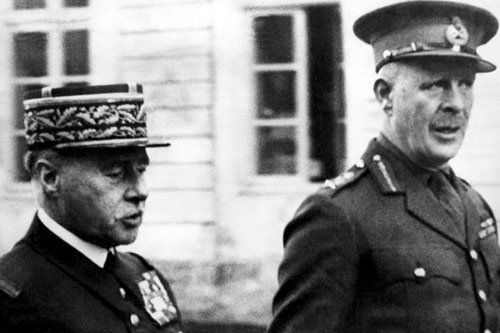 Two of the reasons that, in my opinion, the war was not finished near the beginning Old school, conservative, soldiers in the 'wrong war' Gamelin & Gort |
|
On the home front, this is a young girls story of the day war broke out.
It is copied from an email sent to me for my local site of
sutton-coldfield.net: At the start of the war, I was on holiday with my Mother in Southsea. My Father had died quite recently and we were having a break. War was declared and on the same day there was absolute panic in Southsea and Portsmouth with people trying to get away from the coast as quickly as possible because everyone thought we would be shelled, or bombs dropped on us! The situation was so bad that the trains were crowded and people fighting and screaming to get away. Lots of people were injured in the rush but my Mother and I managed to get away eventually, back to Sutton Coldfield. |
 |